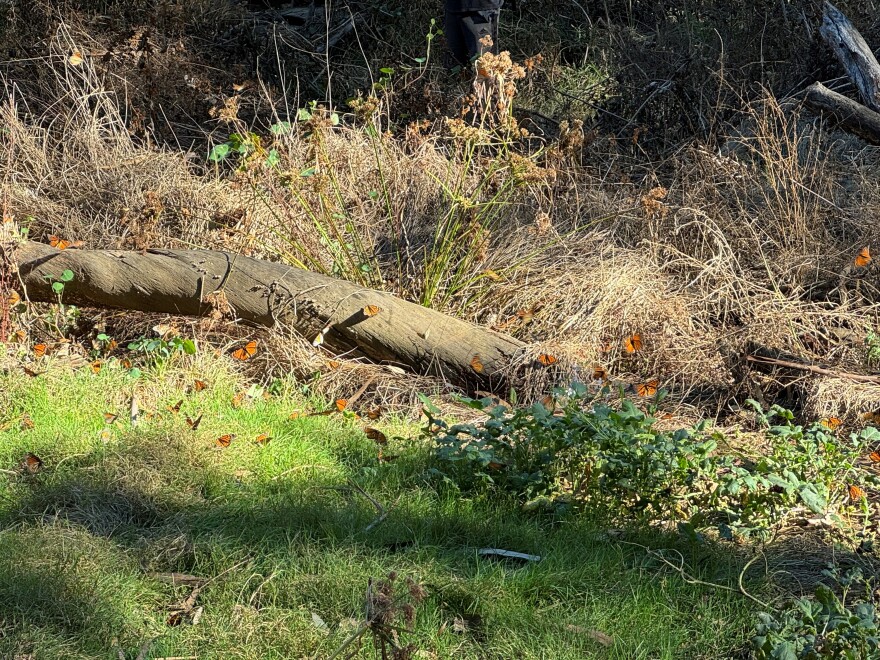Charis van der Heide, a Senior Biologist at Alt House and Meade, who also co-ordinates the Western Monarch Thanksgiving Count for the Xerces Society has been to Ellwood Mesa Butterfly Grove many times before.
But this time…she almost can’t believe what she’s seeing. The distinctive fluttering and soaring of their orange and black wings, as hundreds of monarch butterflies bathe in the sunlight coming through the eucalyptus trees at the preserve.
"I haven't seen them this active this early in the morning, but it's going to be such a warm day," she exclaims.

In recent years, the Western Monarch Butterfly population here had decreased significantly - in fact, one year the count was just 12 butterflies - but this year the count last month was 11,000 and it’s expected to peak this month.
"For three years, it had very, very low numbers. There was one year, the high was 12 monarchs. How many show up here in the winter at these overwintering sites is dependent on so many environmental factors across the West," said van der Heide.
Monarch butterflies typically live from 2 to 6 weeks, except for the last generation of the year.
"The lifespan of a monarch is very dependent on when it hatches out of its chrysalis. Summer monarchs live about 2 to 4 weeks, and there's several generations over the summer. But that last fall generation that comes out, we call it the super generation. And they are the ones that will live about 8 to 9 months. Make the migration from wherever they are in the West. They will mate and then disperse from the overwintering sites and lay those next eggs for that next generation of summer monarchs. So they either get to live one month in the summer or nine months through the winter," she explained.
As we walk to the main part of the grove…we see thousands of Western Monarchs – keeping still in clusters, their tightly closed wings making dark shadows on the trees.
"We call it roosting or clustering in the trees where they all grouped together on a branch," she said.


The Monarchs that come here for winter migrate to the coast here to survive the winter months. It’s a magical spectacle for visitors here, delighted to see these butterflies return.
It's not just in Goleta, Pismo Beach Butterfly Grove is also experiencing high numbers, with over 16,000 counted on December 1.



